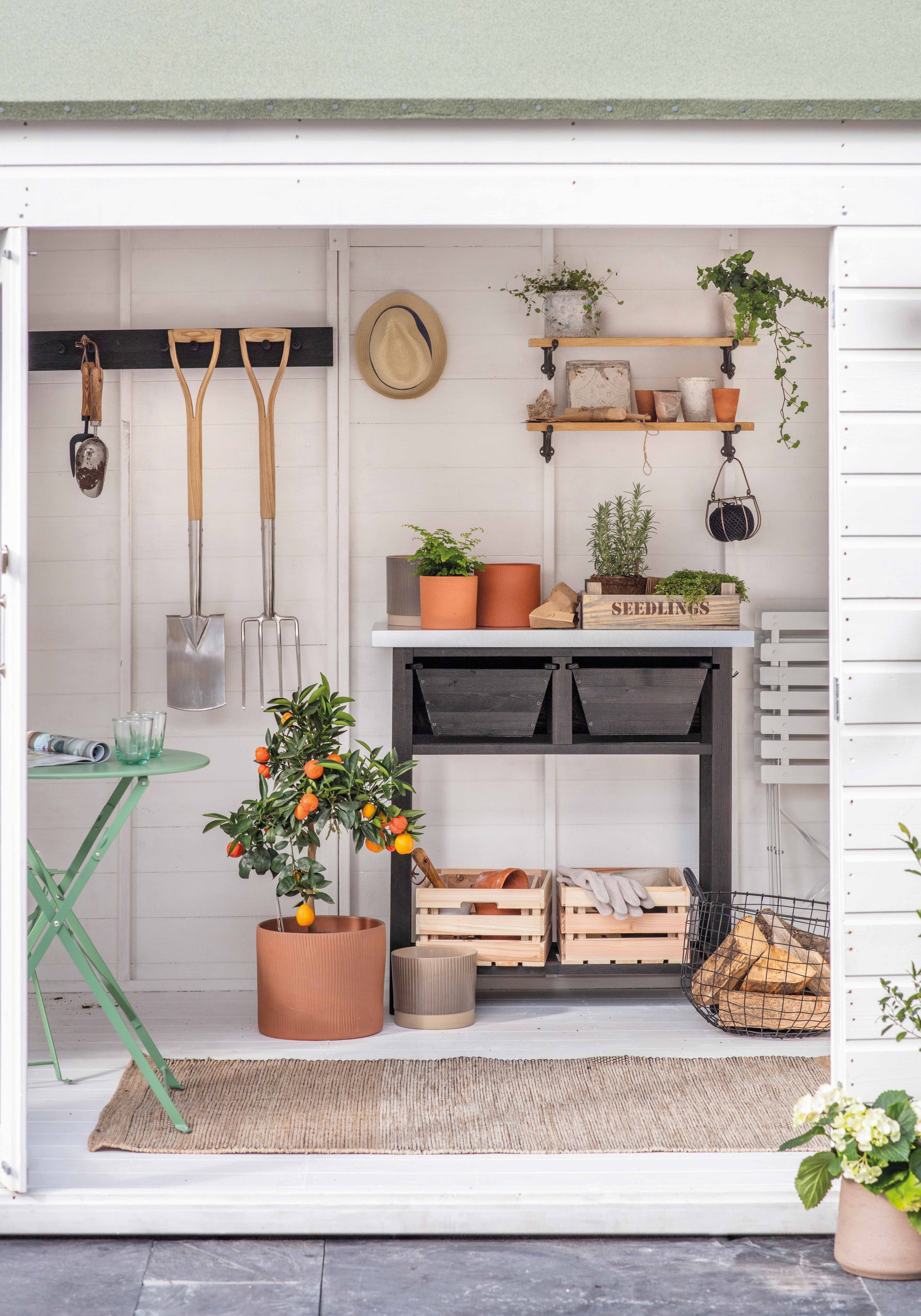What to Consider When Building an Eco-Friendly Garden Shed
Image Credit: Garden Trading
Sustainability is now an important consideration before purchasing or building anything for our homes. When it comes to garden design, there are many opportunities to make it more eco-friendly. For starters, just having plants out front will instantly make it more sustainable than a bricked-over drive as it allows the ground to naturally absorb rainwater (rather than overflowing drainage systems). Garden furniture can be made from natural materials that are easy to recycle like rattan; potting tables can be constructed from scrap wood and terracotta pots can be used over and over, but is it possible to have an eco-friendly shed? In this post, here are 5 considerations when building an eco-friendly garden shed:
Use materials that are sustainable from a renewable source
Learn how to protect it so that it lasts
Consider the insulation
Encourage wildlife to live on and around the shed
Attach a water butt that will collect rainwater for the garden
Reusing old or broken furniture and discarded sinks in the garden is an attractive and sustainable way to put to good use items that would otherwise go to landfill. A wide range of outdoor lighting is available from Lights4fun.
Use materials that are sustainable and from a renewable source
The most sustainable way to construct an eco-friendly garden shed is to use waste products that would otherwise go to landfill - timber from delivery crates and old corrugated roofing sheets are perfect to use when shed building. However, if you need to buy new materials to build your shed, make sure the wood comes from a renewable source and is a sustainable material that doesn’t support illegal logging or irresponsible deforestation. Look for the FSC symbol when purchasing wood; this guarantees responsible forestry has taken place where trees are replaced after harvesting.
Image credit: Light4fun
Learn how to protect your eco-friendly shed so that it lasts
A bad storm can destroy a shed, a very frosty winter can destroy a shed, and forgetting to install gutters can also ruin a good shed! The outdoor elements are rough, and just like your house and car, your shed has to withstand them, too. Ideally, you should look into eco-shed bases to help avoid any issues with the flooring and the foundation overall. You’ll also need to protect your wood to make sure that it doesn’t rot prematurely - make sure you regularly apply a biocide-free wood preservative that is water-repellant and enhances the wood's natural character.
Consider the Insulation
Mildew, dampness and mould are all a result of bad insulation and will damage your shed, as well as its contents. Look into insulating your shed with natural, eco-friendly materials such as wool, cork and hemp.
Burgon & Ball Traditional Trug 40cm, £31.99; K & S Traditional Bypass Secateurs, £12.99; Jute Twine Bleached Stone 150m 250gm, £4.99, all Dobbies Garden Centres.
Encourage wildlife to live on and around the shed
A real eco-friendly shed will encourage bio-diversity. Plant insect-loving plants around the shed such as lavender and butterfly bush and attach bug hotels to the shed walls. If your shed roof is structurally sound, you can add a green roof that provides a habitat for birds and insects and improves air quality in urban areas.
Attach a water butt that will collect rainwater for the garden
Watering our garden with a hose full of clean water is wasteful and doesn't conserve our precious water supply. Instead, add guttering to your eco-friendly shed that connects and fills a water butt with rainwater. You can then water your garden directly from the butt using a watering can.
Aldsworth Narrow Wooden Ladder Shelf, available via Cuckooland.com.








